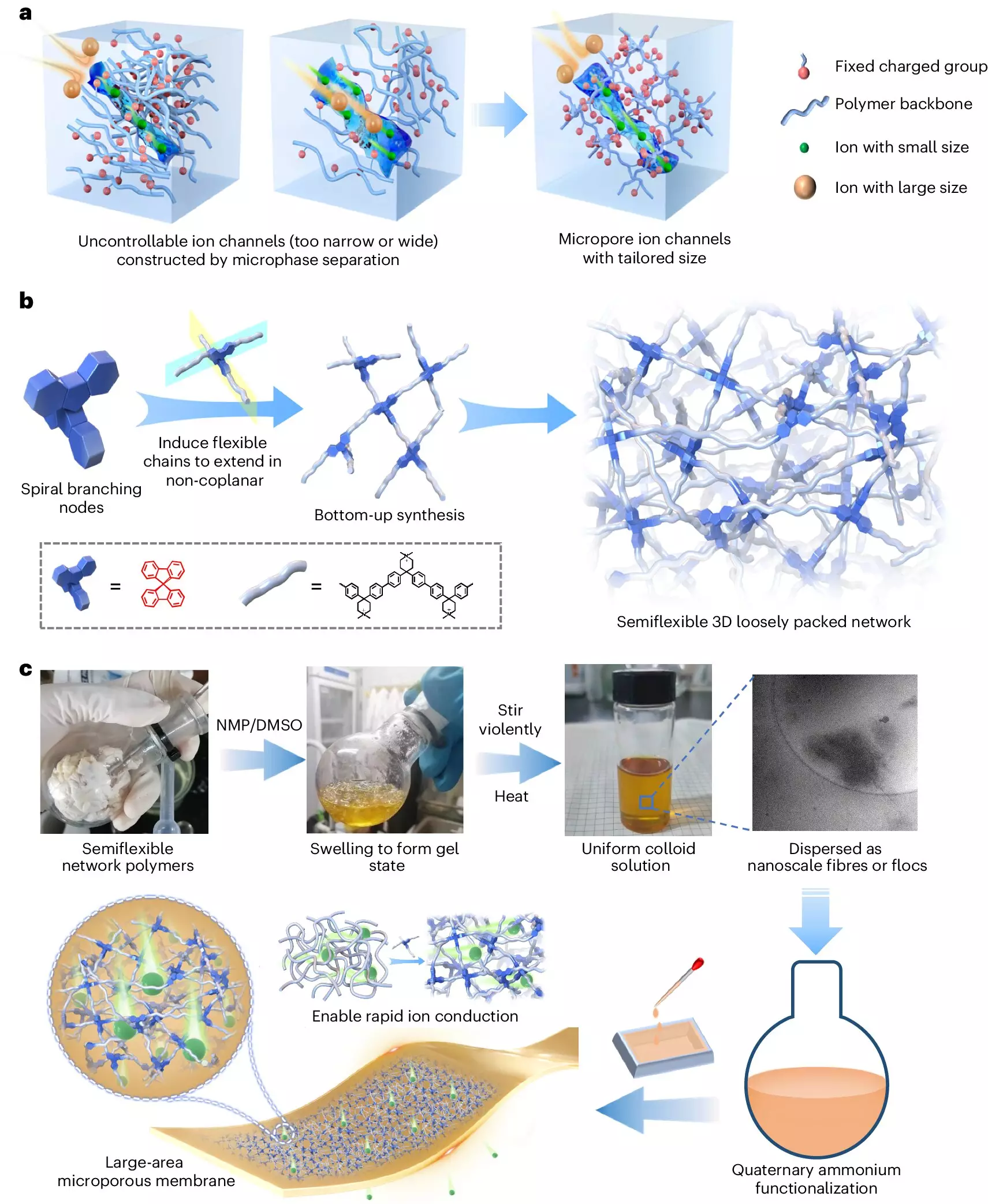An exciting breakthrough has been achieved by a team of researchers in the development of anion exchange membranes (AEMs). This new membrane design incorporates highly connected sub-nanometer microporous ion channels, showing exceptional performance in flow battery applications. The team, led by Prof. Xu Tongwen and Ge Xiaolin from the University of Science and Technology of China (USTC) of the Chinese Academy of Sciences (CAS), recently published their study in Nature Sustainability.
AEMs have diverse applications, ranging from chemical separations to water electrolysis for hydrogen production. Efficient ion conductivity is vital for improving the performance and sustainability of these applications. Traditional methods have struggled to balance ion conductivity, selectivity, and stability, limiting the overall performance of the membranes.
To address these challenges, the research team developed a novel spiro-branched polymeric membrane using stereotwisted spiro scaffolds and poly (aryl piperidinium) based on an all-carbon backbone. This innovative design aimed to enhance the free volume within the polymer, crucial for forming efficient ion transport pathways. The membrane forms a semi-flexible 3D loosely packed network, increasing the free volume and creating highly connected sub-nanometer ion channels.
Comprehensive structural characterization, including morphology analysis using scanning electron microscopy (SEM) and transmission electron microscopy (TEM), revealed the unique structure of the membrane. The membrane’s spiro-branched configuration combines the rigidity of spiro units with the flexibility of branched chains, providing an efficient ion transport pathway.
The performance evaluation of the spiro-branched polymeric membranes showed exceptional anion conductivity, with chloride ion conductivities exceeding 60 mS cm-1 at 30°C and reaching up to 120 mS cm-1 at 80°C. In flow battery applications, these membranes exhibited superior power density and energy efficiency, enabling rapid charge and discharge cycles at a high current density of 400 mA cm-2. Additionally, the membranes demonstrated excellent chemical stability in vanadium redox flow batteries, highlighting their potential for long-term use in energy storage systems.
This breakthrough in AEMs offers a new strategy for membrane material design, addressing various energy and environmental challenges. The research not only advances polymer science but also opens the door to more efficient and sustainable energy storage technologies. The innovative spiro-branched polymeric membrane design paves the way for future developments in membrane technology.


Leave a Reply